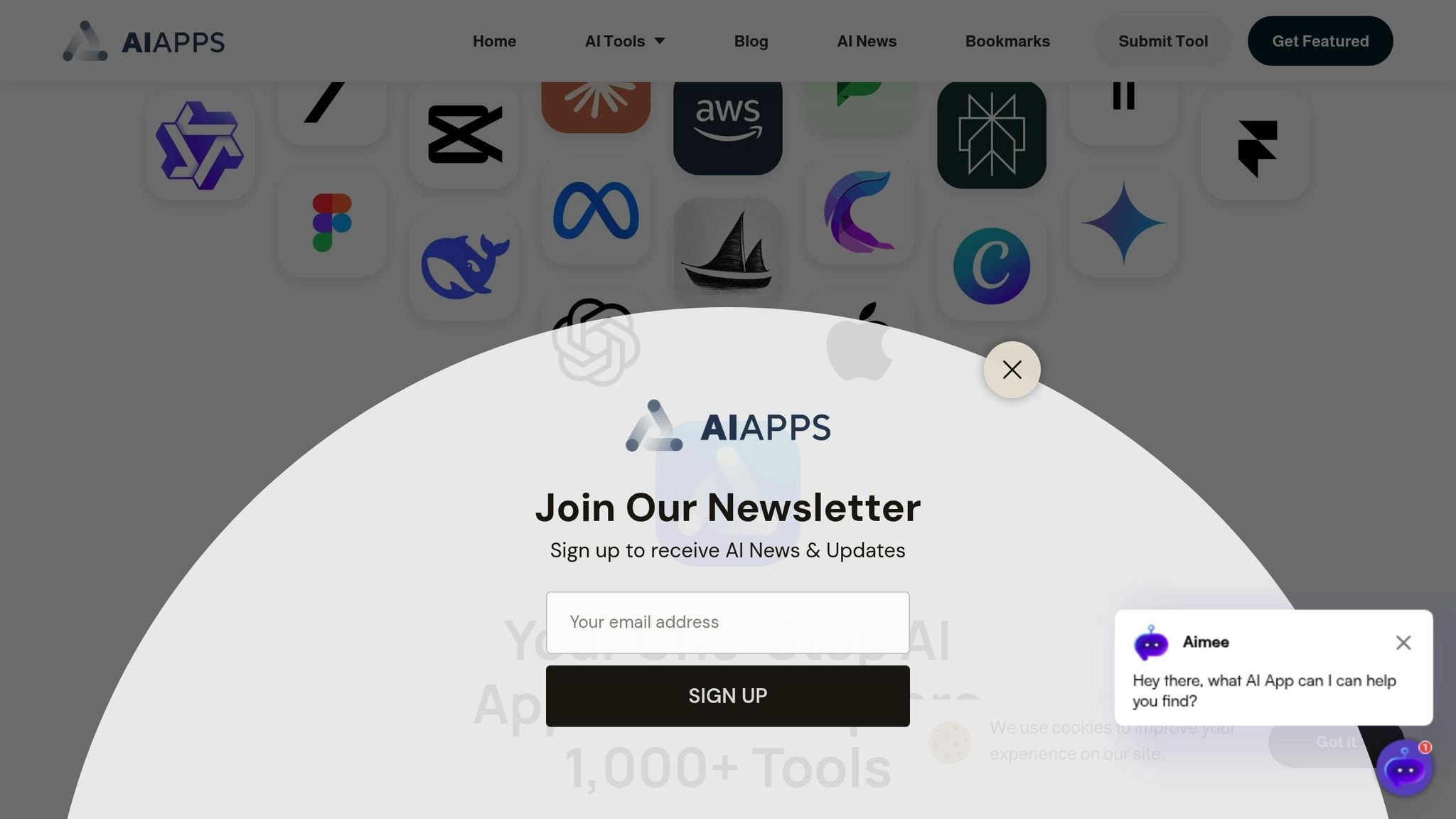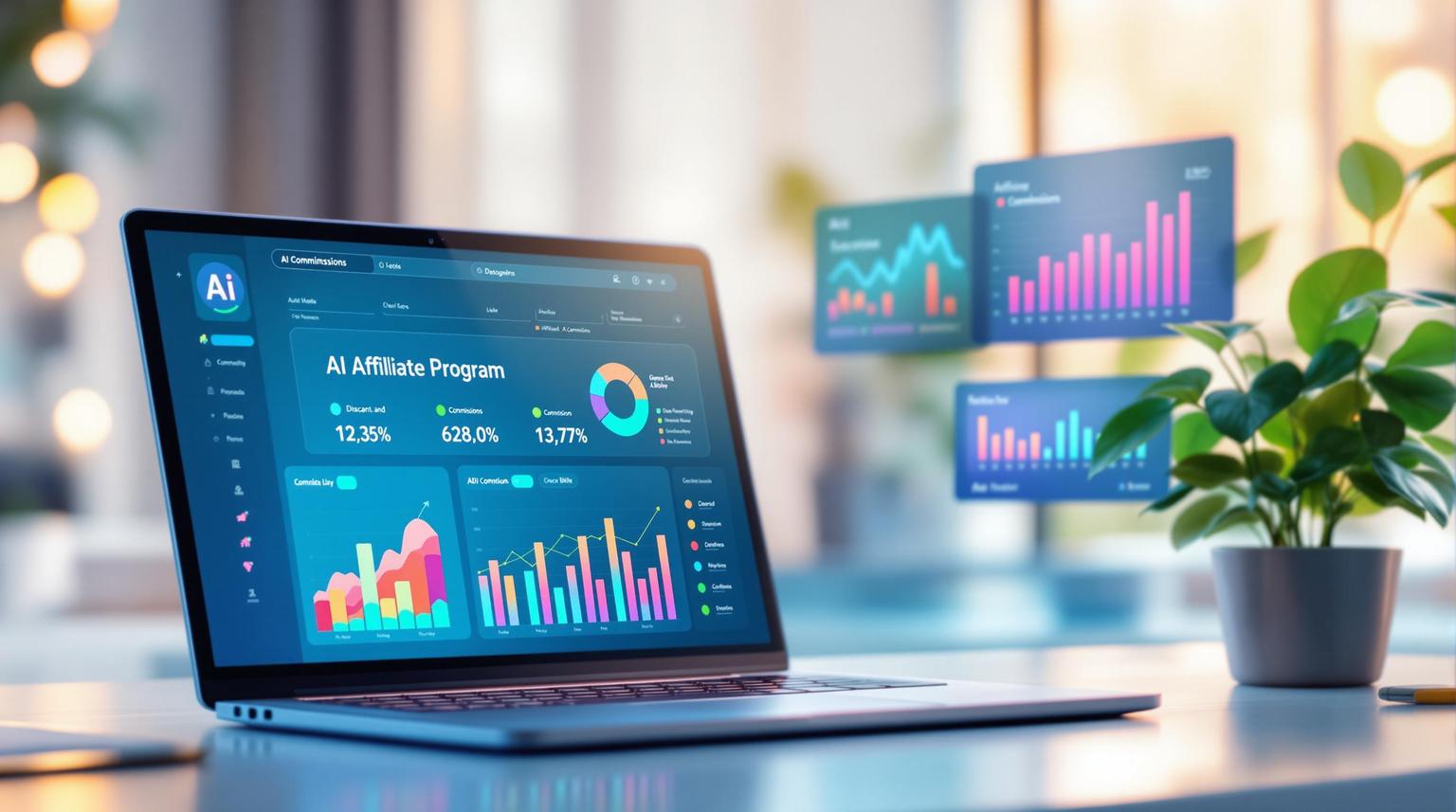- Research Advancements: Faster medical imaging, energy-efficient AI models, and compact tools for coding and writing are reshaping healthcare, tech, and edge computing.
- New AI Tools: Enhanced reasoning, multimodal processing, and document organization tools improve workflows for professionals. Prices range from $10–$30/month.
- Industry Trends: AI is driving automation in law enforcement, improving public safety, and optimizing digital marketing with predictive analytics and conversational AI.
- Open-Source Growth: Developers and businesses are turning to open-source AI for flexibility and cost savings, especially in regulated sectors like healthcare and finance.
- Regulations and Ethics: New U.S. guidelines aim to balance innovation with privacy, transparency, and workforce adaptation.
Key launches include GPT-5, Claude Opus 4.1, and Gemini 2.5 DeepThink, raising AI performance benchmarks. Big tech investments in AI infrastructure hit $320 billion this year, while job postings increasingly demand AI skills. Stay ahead by exploring these updates and trends shaping the future of work and technology.
AI News 20 Aug 2025
AI Research Advances: New Developments This Month
This month, researchers made strides in addressing challenges in medical diagnostics and computational efficiency, reshaping how AI supports both everyday tasks and professional workflows.
Major Scientific Advances
In the healthcare field, researchers are working on new methods for medical imaging diagnostics. These approaches aim to improve both speed and reliability, which could be particularly impactful for communities with limited access to specialized medical care. Another noteworthy development involves a neural network design that significantly reduces energy consumption. This improvement makes it possible for organizations to leverage advanced AI capabilities using standard hardware, cutting costs and expanding accessibility. Additionally, a compact AI model has been introduced, tailored for specialized tasks like code generation and technical writing. Designed for mobile and edge computing, this model offers a more efficient solution for specific applications.
Comparison of Research Advances
These advancements each address unique challenges:
- Healthcare Diagnostics: Faster, more reliable imaging tools improve access to critical care.
- Energy-Efficient Neural Networks: Lower energy demands make advanced AI more accessible to a broader range of organizations.
- Compact AI Models: Optimized for tasks like coding and writing, these models bring high performance to mobile and edge devices.
New AI Tool Releases and Updates
August 2025 has brought a wave of new AI tools and updates, directly translating cutting-edge research into practical applications. These advancements are designed to improve workflows, focusing on better integration, reasoning, and memory capabilities. The result? AI tools that make everyday tasks easier and more efficient for professionals across various industries.
Key Releases and Updates
The announcements this month emphasized improvements in areas like mathematical reasoning, code generation, and multimodal processing - enabling AI to handle text, images, and data more effectively. Other updates include better conversational context retention, ensuring smoother interactions, and upgraded safety features to enhance user trust.
Productivity tools also received noteworthy upgrades. For instance, some spreadsheet applications now include advanced data analysis features, allowing users to perform natural language queries and instantly generate visual insights from raw data. Additionally, tools have introduced automated organization for uploaded documents, making knowledge management simpler. Expanded multimedia editing features, including streamlined video creation, were also highlighted as a major step forward for creative professionals.
Tool Feature Comparison
Here’s a snapshot of the key features and use cases for some of the latest AI tools:
| Tool | Key Features | Primary Use Cases | Starting Price (approx.) |
|---|---|---|---|
| Tool A | Advanced reasoning and multimodal capabilities | Technical analysis and research | ~$20/month |
| Tool B | Better context retention and enhanced safety | Complex problem solving and content creation | ~$30/month |
| Tool C | Persistent memory for personalized assistance | Long-term projects and workflow continuity | ~$20/month |
| Tool D | Natural language-driven data analysis | Business and financial analytics | ~$30/month |
| Tool E | Automated document organization | Knowledge management and content structuring | ~$10/month |
| Tool F | Improved multimedia and text-to-video editing | Marketing and presentation design | ~$15/month |
These updates reflect a broader trend in the AI industry: tools designed for seamless integration, personalized assistance, and higher efficiency. By addressing common hurdles like repetitive context re-entry and disorganized workflows, these innovations are setting a new standard for AI-powered productivity.
Spotlight on AI Apps: Your Gateway to AI Tools

With the ever-growing number of AI tools - over 1,000 and counting - it can feel overwhelming to find the right one for your needs. That’s where AI Apps steps in. This platform simplifies the process by offering a curated directory of AI tools, making it easier for professionals to discover, compare, and access cutting-edge technologies in one place.
From AI art generators to text creation tools, video editing software, and automation platforms, AI Apps brings together a wide range of solutions. By centralizing these options, it eliminates the hassle of searching through scattered resources and sets the stage for a deeper dive into its standout features.
Key Features of AI Apps
AI Apps stands out for its rigorous multi-step verification process, ensuring that only high-quality tools make the cut. It also offers robust filtering options, allowing users to refine their search by category, sub-category, and pricing model. Whether you’re hunting for free tools or premium solutions, the platform adapts to meet your specific needs.
The platform also highlights newly launched tools and major updates, so you’re always in the loop about the latest advancements in AI technology.
Another key feature is its support for both free and paid tool listings. Free listings provide essential details and ensure tools are searchable, while premium listings enjoy enhanced visibility through featured placements. This dual approach creates a space where emerging developers can gain traction alongside established brands.
How AI Apps Benefits US Users
For US-based professionals, AI Apps offers tailored advantages. Marketing experts, educators, and automation specialists can enjoy seamless integration with popular business software, clear tool categorization for academic settings, and solutions that cover a broad range of workflows. Pricing is displayed in US dollars, making budget comparisons straightforward and user-friendly.
Developers can also submit their tools directly through the platform, ensuring a steady stream of new and innovative options designed with US users in mind.
Additionally, the platform’s blog provides regular updates on AI trends across key industries like healthcare, finance, retail, and manufacturing, keeping professionals informed and ahead of the curve.
sbb-itb-212c9ea
AI Trends Across Industries
By August 2025, AI continues to reshape industries across the U.S., pushing boundaries in everything from law enforcement to digital marketing. Whether it's autonomous systems aiding public safety or hyper-personalized campaigns transforming consumer engagement, AI's influence is far-reaching. These advancements not only open doors for businesses, educators, and developers but also align with broader shifts like regulatory changes and new market applications.
AI in Automation and Law Enforcement
Law enforcement agencies are increasingly leaning on AI-driven automation to improve public safety. Tools like predictive policing and autonomous surveillance systems are now analyzing crime data and identifying suspicious behaviors in real time. This enables quicker responses while also streamlining administrative tasks.
However, the rise of such technologies has sparked privacy concerns. In response, several states are pursuing measures to ensure transparent oversight of these systems.
Financially, AI is driving innovation in law enforcement, with tools like real-time language translation improving community interactions and automated report generation reducing paperwork for officers. These advancements not only save time but also allow agencies to focus more on critical tasks.
AI in Digital Marketing
AI has revolutionized digital marketing, making personalization and automation more effective than ever. With dynamic content generation, marketers can quickly produce multiple ad variations, while AI tools continuously test and refine them for better performance across diverse audience segments.
Conversational AI has also made strides, with chatbots now capable of handling complex customer inquiries and even completing sales. Many e-commerce companies report that these tools resolve the majority of customer issues automatically, all while maintaining high satisfaction rates.
Predictive analytics is another game-changer, helping businesses anticipate short-term consumer behavior. This allows companies to better manage inventory and launch targeted campaigns, which has led to notable increases in conversion rates.
Meanwhile, voice and visual search optimization are gaining traction as search habits evolve. With younger audiences increasingly relying on voice search, businesses are tailoring content to align with natural language processing, ensuring they stay relevant in this shifting landscape.
Open-Source AI Growth
The open-source AI movement is thriving in 2025, fueled by a demand for transparency and the ability to customize AI systems. Developers and businesses are turning to open-source solutions to avoid vendor lock-in and gain more control over their AI tools.
Community-driven projects have accelerated innovation, producing AI models that rival commercial ones. Open-source frameworks allow developers to freely modify, improve, and share tools, resulting in faster development cycles and enhanced functionality.
In regulated fields like healthcare and finance, the ability to audit open-source code for compliance has made these solutions increasingly attractive. Educational institutions are also adopting open-source AI for teaching and research, offering students affordable, flexible tools that encourage hands-on learning. This approach is cultivating a new wave of developers who are well-versed in open-source methods from the outset of their careers.
This growing preference for open, transparent AI solutions underscores the broader trends shaping August 2025. It’s a shift that prioritizes accessibility, collaboration, and adaptability in the rapidly evolving AI landscape.
AI Regulations, Ethics, and Social Impact
In August 2025, the U.S. updated its approach to AI governance to strike a balance between encouraging innovation and safeguarding consumer protection, data privacy, and transparency. Lawmakers and industry leaders are working to ensure that technological progress aligns with ethical and societal needs.
Here’s a closer look at the latest federal and state actions shaping this dynamic field.
Regulatory Updates
Regulations are evolving to address AI's growing influence across sectors. Federal agencies are rolling out new guidelines to evaluate the security and reliability of AI systems, particularly in critical services. Meanwhile, state governments are taking diverse approaches - some are requiring disclosures for sensitive AI applications, while others are simplifying compliance processes to encourage innovation.
Ethical Considerations
The ethical challenges surrounding AI are driving significant conversations about how user data is handled. Companies are revisiting their data practices, focusing on obtaining proper consent and ensuring privacy. At the same time, there’s a push to make AI decision-making more transparent, helping users better understand how complex outcomes are reached.
Regulators are also keeping a close eye on claims about AI capabilities, aiming to prevent exaggerated or misleading representations in marketing materials. The potential disruption to the workforce caused by AI has sparked discussions about retraining and upskilling programs, aiming to support workers as industries adapt to new technologies.
In education and publishing, the rise of AI-generated content is raising questions about proper attribution and academic integrity. These discussions are influencing how AI tools are designed, emphasizing the importance of accountability and clear ethical standards.
Collectively, these regulatory and ethical shifts are reshaping the way businesses adopt AI. While these changes bring new opportunities, they also demand careful navigation to ensure AI is used responsibly in a fast-changing legal and social environment.
Conclusion: Key Points from August 2025 AI News
August 2025 proved to be a transformative month for artificial intelligence, with major developments shaping how businesses and individuals engage with this technology.
The release of GPT-5, Claude Opus 4.1, and Gemini 2.5 DeepThink raised the bar for AI performance. GPT-5 achieved a perfect 100% score, while Gemini 2.5 closely followed with 99.2% in competition math tests. These advancements highlight the rapid evolution of AI capabilities.
Agentic AI is making waves in industries like customer support, IT, and back-office operations. Projections show this market could reach $24.5 billion by 2030, growing at an impressive annual rate of 46.2%.
Big tech companies are doubling down on AI infrastructure, with Microsoft, Alphabet, Amazon, and Meta set to invest a staggering $320 billion in 2025, a notable jump from $230 billion in 2024.
However, the job market reflects the shifting dynamics. While entry-level job postings dropped by 15% year-over-year, mentions of AI in job descriptions surged 400% over the last two years. This underscores the urgent call for widespread AI upskilling.
On the regulatory front, there’s growing emphasis on governance to ensure consumer protection, data privacy, and transparency as AI becomes more integrated into daily life.
A PwC survey revealed that 40% of CEOs believe their companies need to reinvent themselves to stay competitive. The cost of ignoring AI advancements is now seen as far greater than the investment required to adopt them.
FAQs
What steps is the U.S. taking to balance AI innovation with privacy and transparency?
The United States is rolling out fresh guidelines to support AI development while tackling issues like privacy and transparency. In August 2025, multiple states adopted updated AI regulations, and federal programs were introduced to enhance oversight of AI technologies. These steps are geared toward fostering responsible advancements, mitigating risks, and ensuring AI systems are both understandable and accountable.
This month, new laws were introduced, including stricter transparency requirements designed to make AI systems more open and secure. These actions highlight an increasing emphasis on advancing technology while protecting individual rights and maintaining public trust.
How is the growing demand for AI skills shaping the job market, and how can professionals stay competitive?
The demand for AI-related skills is reshaping the U.S. job market, with careers like AI specialists and machine learning engineers experiencing rapid growth. This surge highlights how industries such as healthcare, marketing, and automation are increasingly embracing AI technologies.
To remain competitive, professionals should prioritize developing sought-after skills like programming, machine learning, data analysis, and prompt engineering. Keeping up with the latest developments in AI while sharpening critical thinking and problem-solving abilities can also make a big difference. In this ever-changing field, committing to continuous learning and staying flexible will be essential for long-term success.
How is the open-source AI movement transforming regulated industries like healthcare and finance?
The open-source AI movement is making waves in heavily regulated sectors like healthcare and finance by emphasizing openness, collaboration, and progress. These tools invite wider examination and validation, helping organizations tackle regulatory demands with greater ease.
As regulations such as the EU AI Act and the U.S. AI strategy increasingly stress transparency and reducing bias, open-source AI solutions are stepping up to meet these challenges. By promoting trust and making AI systems easier to understand, this approach is laying the groundwork for safer and more dependable applications in industries where precision and accountability are critical.



